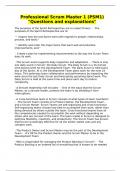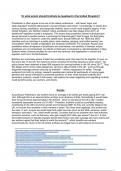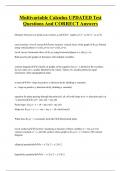Samenvatting
Summary of Everything from Mergers, Acquisitions & Private Equity
- Vak
- Instelling
This is a very extensive summary, including many notes from all classes, summaries of all required articles, and from the chapter 11, 12, 13 of the McKinsey book. Also all slides are included, provided with notes.
[Meer zien]












